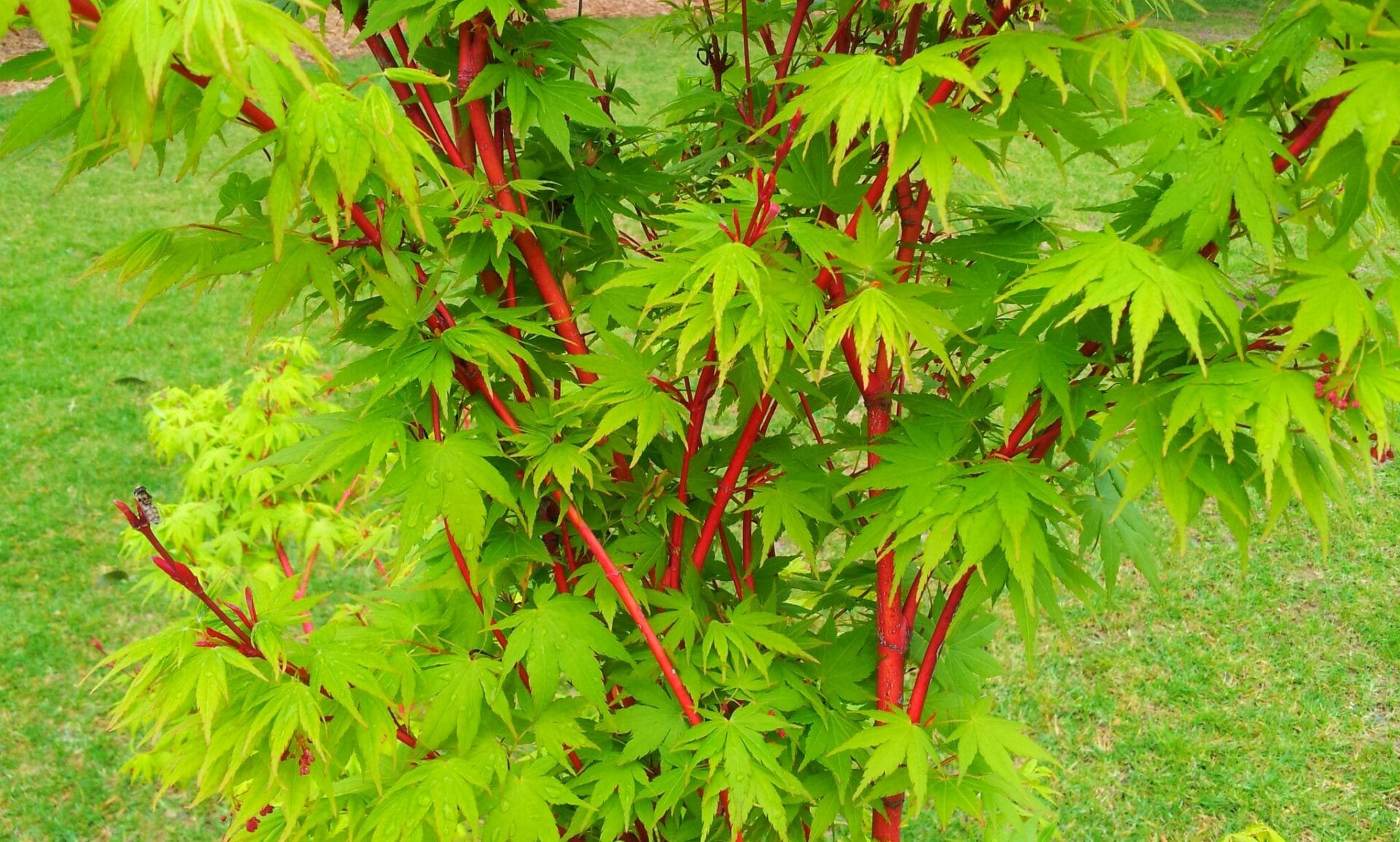

Coral Bark Japanese Maple Acer palmatum Sango Kaku New leaves are light green, tinged with red Leaves are green in the summer and change to yellow-gold in the fall Brilliant coral bark on young branches intensifies in colour in the winter Vase-shaped, upright habit ZONE: 6. Our 1 Gallon and 3 Gallon sizes are available for shipping and in store pickup. Acer palmatum Sango Kaku - Coral Bark Japanese Maple. 'Sango kaku' Coral Bark Japanese Maple is a must have tree for nearly any landscape that desires fall and winter interest.ġ0 Year Size: Height: 15-18 Feet Width: 8-10 Feet 'Sango kaku' Coral Bark Japanese Maple is one of the fastest growing Japanese maples that we grow as it can grow multiple feet per year when young. In hotter climates if you can give it some afternoon shade in summer so the foliage will remain pretty all summer long. It is very important to site this tree properly, the more sun in winter the better the bark color. The fall color is a stunning golden yellow with hints of orange later in the season. The foliage is lime green in spring darkening as summer temperatures warm. Synonymous with and formerly sold as ‘Senkaki’.Acer palmatum ‘Sango Kaku’ Coral Bark Japanese Maple has bright coral red colored bark in winter which gives this tree a fourth season of interest more than most other Japanese maples. Choose this variety if you're looking for a small-size red cut-leaf variety of Japanese maple. Cultivar name means coral tower ( sango meaning sea coral and kaku meaning tower/upward growing) as if to suggest this pink-barked cultivar resembles coral rising upward from a reef. 01 of 18 Dissectum Atropurpureum Peter Krumhardt A classic Japanese maple, 'Dissectum Atropurpureum' bears deeply cut, feathery, red-purple leaves that turn crimson in fall. Flowers are followed by samaras that ripen in late summer to fall. Small reddish-purple flowers in spring are somewhat attractive on close inspection, but are not showy from a distance. Japanese maples range from 2 to 30 feet tall in forms that can be weeping, rounded, dwarf, mounding, upright, or cascading. Palmate, 5- to 7-lobed, almost ferny leaves (to 2” long) with serrate margins emerge yellow-green with reddish margins in spring, mature to light green by summer and turn yellow-gold in fall. Best pink coloration occurs on young twigs and branches. Pink coloration is less pronounced to almost absent in summer. It is sometimes commonly called coral bark maple in reference to its distinctive and showy pink bark which provides excellent color and contrast to landscapes in winter. ‘Sango-kaku’ is an upright, slow-growing, vase-shaped form that typically grows over time to as much as 20-25’ tall. Each leaf has several lobes (typically 5–7) that all originate from one point looking like an open hand with outstretched fingers. Specific epithet is in reference to the palmate nature of the leaves. Genus name is the Latin name for a maple tree. Cultivars (often grafted) are quite variable. Fall color includes shades of yellow, red-purple and bronze.

Flowers are followed by samaras (to 3/4" long) in pairs. The flowers are rather attractive close up, but are not particularly showy from a distance. Small reddish-purple flowers in umbels bloom in mid spring (April). Each palmate green leaf (2-5" long) has 5 or 7 but less frequently 9 pointed toothed lobes. General plant form is rounded to broad-rounded, often with low branching.


Acer palmatum, commonly called Japanese maple, is a deciduous shrub or small tree that typically grows to 10-25' (infrequently to 40') tall.


 0 kommentar(er)
0 kommentar(er)
